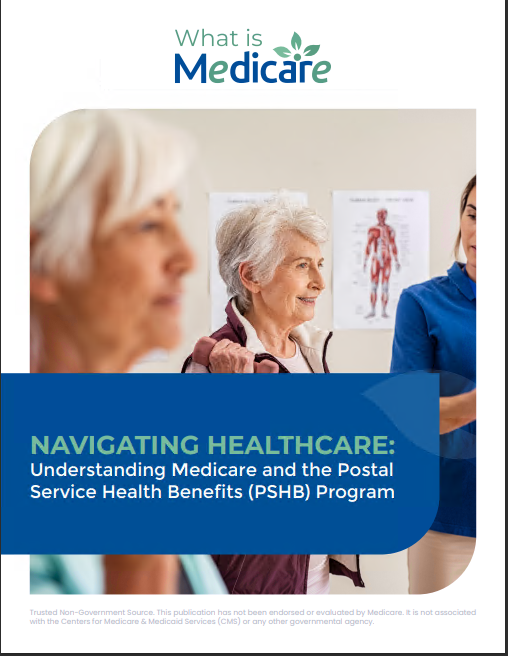Key Takeaways
- Understand the differences between Medicare Advantage and Medigap to make informed decisions about your healthcare needs.
- Comparing coverage, costs, and flexibility can help you choose the right plan tailored to your lifestyle and medical needs.
Why Choosing the Right Medicare Plan Matters
When it comes to picking a Medicare plan, the choices can feel overwhelming. I get it—there’s a lot to unpack. But breaking down the comparison between Medicare Advantage and Medigap (also known as Medicare Supplement Insurance) side by side can help you make a confident decision. Let’s dive into what sets these plans apart and what to consider when weighing your options.
Medicare Advantage: The All-in-One Option
What It Is Medicare Advantage (Part C) is like a bundled package combining Medicare Part A (hospital insurance), Part B (medical insurance), and often Part D (prescription drug coverage). Offered by private insurance companies approved by Medicare, these plans can provide a range of additional benefits not covered by Original Medicare.
Key Benefits of Medicare Advantage
- Extra Perks: Many Medicare Advantage plans offer additional benefits like dental, vision, and hearing coverage.
- Network-Based Care: Most Medicare Advantage plans use a network of doctors and facilities, which may include Health Maintenance Organizations (HMOs) or Preferred Provider Organizations (PPOs). Staying in-network usually means lower out-of-pocket costs.
- Integrated Services: Since these plans are often all-in-one, you may find it easier to manage your medical, hospital, and prescription drug coverage within a single plan.
Considerations for Medicare Advantage
- Limited Flexibility: One thing to watch out for is that Medicare Advantage plans typically come with network restrictions. If you prefer to visit specialists or doctors outside the network, expect higher costs or a lack of coverage.
- Yearly Plan Changes: Medicare Advantage plans can change their offerings annually. This means that what works for you this year might look different next year, so you’ll need to review your plan every Annual Enrollment Period (October 15 to December 7).
Medigap: Filling in the Gaps of Original Medicare
What It Is Medigap is designed to supplement Original Medicare by covering certain out-of-pocket costs like copayments, coinsurance, and deductibles. Unlike Medicare Advantage, Medigap policies are standalone and don’t include prescription drug coverage—you’d need a separate Part D plan for that.
Key Benefits of Medigap
- Predictable Costs: Medigap helps cover the costs that Original Medicare doesn’t, which can make your healthcare expenses more predictable. This can be especially helpful if you frequently need medical services.
- No Network Restrictions: Medigap allows you to see any doctor or specialist that accepts Medicare, giving you more freedom to choose your healthcare providers.
- Stable Coverage: Unlike Medicare Advantage, Medigap policies remain consistent year after year as long as premiums are paid. This stability can offer peace of mind when planning your long-term medical care.
Considerations for Medigap
- Higher Monthly Premiums: While Medigap can save you from unexpected medical bills, these plans often come with higher monthly premiums compared to most Medicare Advantage plans.
- Separate Prescription Coverage: Remember, Medigap doesn’t include drug coverage, so you’ll need to purchase a standalone Medicare Part D plan for prescription drugs.
- Initial Enrollment Timing: The best time to buy a Medigap policy is during your six-month Medigap Open Enrollment Period, which starts when you turn 65 and enroll in Medicare Part B. During this period, insurers can’t use medical underwriting, meaning they can’t deny coverage or charge higher premiums based on your health. Outside this window, securing a Medigap plan can be more difficult and costly if you have pre-existing conditions.
Comparing Costs: The Big Picture
Both Medicare Advantage and Medigap come with their own cost structures. Here’s how they generally stack up:
- Out-of-Pocket Maximums: Medicare Advantage plans come with an out-of-pocket spending cap. Once you hit this cap, the plan covers 100% of your covered services for the rest of the year. Original Medicare alone doesn’t have this feature.
- Copayments and Coinsurance: You’ll typically pay a copayment or coinsurance for medical visits, hospital stays, and other services. These can add up, so it’s worth looking at the cost structure of different plans during the enrollment period.
- Monthly Premiums: Medigap usually comes with higher monthly premiums, but these plans help minimize the out-of-pocket expenses for covered services.
- Predictable Spending: With Medigap, you may have more predictable healthcare expenses because many costs are covered in full after your premium. This can be helpful for budgeting, especially if you need frequent medical care.
Choosing Based on Lifestyle and Health Needs
The right choice between Medicare Advantage and Medigap often boils down to your lifestyle and health requirements:
Medicare Advantage May Be Better If…
- You’re okay with network-based care and don’t mind switching doctors if needed.
- You want an all-in-one plan that includes extra perks, like dental and vision.
- You’re comfortable with plan adjustments and are diligent about reviewing your plan each year during the Annual Enrollment Period.
Medigap May Be Better If…
- You want the freedom to see any doctor who accepts Medicare.
- You travel often within the U.S. and need nationwide coverage without network restrictions.
- You prefer the predictability of out-of-pocket costs for better budget planning.
Enrollment Periods: Know When to Sign Up
Understanding when you can enroll in Medicare Advantage or Medigap can save you from missed opportunities and potential penalties:
Medicare Advantage Enrollment Periods
- Initial Enrollment Period (IEP): Starts three months before your 65th birthday, includes your birthday month, and ends three months after. This is the time to enroll in a plan for the first time.
- Annual Enrollment Period (AEP): October 15 to December 7, allowing you to change or enroll in a Medicare Advantage plan.
- Medicare Advantage Open Enrollment Period: January 1 to March 31, during which you can make one change if you’re already enrolled in a Medicare Advantage plan.
Medigap Enrollment Period
- Medigap Open Enrollment Period: A six-month period starting the month you turn 65 and enroll in Part B. Outside of this, acceptance into a plan may depend on your health, and costs could be higher.
What About Prescription Drug Coverage?
A quick note: If you go with Medigap, remember you’ll need to purchase a separate Part D plan for prescription drugs. Many Medicare Advantage plans bundle Part D into their offerings, making it easier to manage all your insurance under one umbrella. If you’re someone who takes multiple medications, comparing Part D plans with your Medigap policy is key.
Key Takeaways to Remember
- Flexibility and Doctor Choice: Medigap wins if having the freedom to choose any doctor is a top priority.
- All-in-One Convenience: Medicare Advantage can be appealing for those who prefer comprehensive, bundled services with additional perks.
- Budget Predictability: While Medigap offers predictable costs with higher premiums, Medicare Advantage can have lower upfront premiums but more variable out-of-pocket expenses.
Which Plan Fits You Best?
Ultimately, your choice should reflect your healthcare needs and financial situation. If you value flexibility and a wider choice of providers, Medigap might be the way to go. If you prefer an all-in-one plan with the added perks of dental, vision, or wellness programs, a Medicare Advantage plan could be more appealing.
Remember, what works for someone else may not be what works for you. Weigh the pros and cons carefully and make sure to review your choice each year to ensure it still fits your lifestyle.
Planning for Your Healthcare Future
Choosing between Medicare Advantage and Medigap is a significant decision that impacts not only your healthcare but also your budget. By understanding the key differences, benefits, and potential downsides of each, you can navigate your options with confidence and make the choice that best suits your needs.






